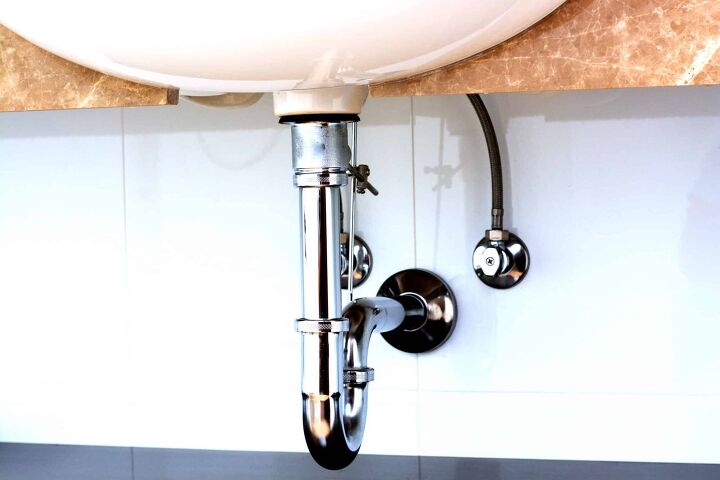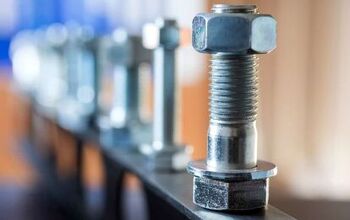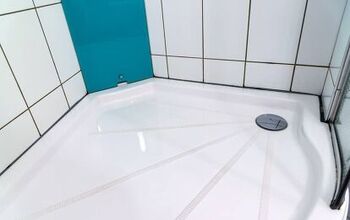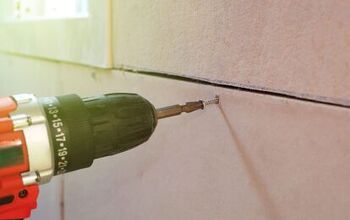How To Connect A 1 -Inch Tailpiece To A 1 -Inch Drain

If you are trying to connect a 1 ¼-inch tailpiece to a 1 ½- inch drain, you are most likely doing so because you need a longer tailpiece. The standard tailpieces that come with the drains sold at most hardware and big-box stores tend to be shorter than you may need. That being said, making the switch is not a difficult thing to do.
What you will need is a tailpiece extension to add onto the tailpiece sold with the drain. In the case of the two pieces being different sizes, you will need a drain, waste, and vent (DWV) adapter or DWV flexible polyvinyl chloride (PVC) coupling. They only cost a few dollars and can be attached in just a few minutes.
Do You Need to Hire a Plumber?
Get free, zero-commitment quotes from pro contractors near you.

Some Pieces Just Do Not Go Together
In some cases, the tailpiece that comes with the drain is welded to a piece that is not set up for the 1 ¼-inch pipe. This means you will need some kind of adapter to join the two together. You can get an adapter of just about any size at the local hardware store or one of the big box stores. Just attach the original tailpiece that came with the drain and put the adapter onto that.
Getting the Right Kind of Adapter
Adapters and extensions are available in plastic or metal and can be cut as needed. But do not get the flexible “accordion-style” adapter because they tend to get clogged a lot. If you are using acrylonitrile butadiene styrene (ABS) pieces, you can get a 1 ¼-inch to 1 ½- inch drain trap adapter. The 1 ¼-inch side is typically a slip fit compression that fits over your 1 ¼-inch piece.
Steps in Attaching the Tailpiece to the Drain
All drains are usually the same. There is a drain attached to a tailpiece, which is attached to the p-trap. The p-trap then goes into the wall. This job is not difficult, and you should be able to do it in under an hour at the most. As long as you have the right parts, you should have no trouble following these steps.
Step One: Attaching the Tailpiece
Use the adapter to attach the tailpiece to the drain. Just slip the adapter onto the end of the pipe that is going to be attached to the drain. Then attach that end to the drain.
Step Two: Attaching the Tailpiece to the P-Trap
Using the shorter side of the trap, slide it onto the tailpiece coming from the drain. You can adjust the trap up and down to get it to fit with the drain tube that goes into the wall.
Step Three: Making it Fit
If you cannot get the p-trap to line up with the hole in the wall, you will either have to cut the tailpiece to fit or get an extension. It depends on whether you need more or less pipe.
Step Four: Fitting the Pipe into the Wall
Uncouple the lower part of the p-trap and fit it into the wall fitting as far as you can get it to go. Disconnect the lower part of the trap and then put the arm into the drain tube in the wall. Be sure it matches up with the other end of the trap.
Step Five: Adjusting the Arm
If the arm part of the p-trap goes all the way into the wall but still goes past the u-shaped part of the p-trap, you will need to cut it down with a saw to make it fit. On the other hand, if the piece is not long enough, you will need an extension.
Tape Tip: Use Teflon tape or pipe joint compound on threads as needed to prevent leaking.
Step Six: Attaching the Pieces
Go ahead and put the p-trap arm in the wall and line it up with the p-trap. Thread it on but do not tighten the slip nuts. Wait until you have connected all of your pieces before tightening any of the slip nuts or adapters.
How Sink Drain Systems Work
Whether it be your kitchen or bathroom, the sink drains by way of a number of essential components. The most basic system involves a sink drain that opens into a vertical length of piping – the tailpiece. This tailpiece connects to the P-trap assembly which consists of a curved, U-shaped pipe and a horizontal piece that connects to the waste line.
However, when you have more than one sink, a garbage disposal, or a dishwasher connected to the drain system, things become slightly more complicated. In these instances, you’ll likely have additional tees, drain extensions, and Y-fittings.
Kitchen sinks are outfitted with a strainer inside of a strainer body that is positioned inside of the sink hole and affixed with a bead of plumber’s putty. Then, underneath the sink, this strainer body is connected to the tailpiece and the rest of the system. If you have a garbage disposal, it is mounted to a special strainer body.
What Size PVC Pipe is Used for Kitchen Sink Drains?
When the water in your sink travels through the drain hole, it goes through a network of pipes before it reaches the main waste pipe. This pipe network is generally constructed of PVC and may be 1 ¼ or 1 ½ inches in diameter.
In older sinks, you may have a drain that is connected to a 1 1/4-inch tailpiece. For more modern drains, you’ll find that they have a 1 ½-inch outlet. The additional piping that is connected to the tailpiece, such as the horizontal extensions and P-trap assembly, will either be 1 ¼ and 1 ½ inches in diameter.
To accommodate a faster water flow, wider pipes are generally preferred. To switch from a narrower pipe to a wider one, you can easily place an adapter in the middle of the network. Or, you can also install an adapter at the wall, where the diameter of the pipe typically shifts to two inches.
Do You Need to Hire a Plumber?
Get free, zero-commitment quotes from pro contractors near you.

Related Questions
What is the Difference Between ABS and PVC Pipe?
If you have not done any plumbing work in a while (or never have), you may not be familiar with the ABS and PVC pipes. These are both plastics, but they are different types of plastics. Which one you choose often depends on what you are working on.Sometimes, your building codes may regulate that you use one or the other so you should check your local building codes first. The main difference is that ABS has bisphenol A (BPA) in it while PVC does not. According to the Food and Drug Administration, BPA should not be used in any type of food or drinking applications.Another difference between ABS and PVC is the color. ABS is always black while PVC is white or gray. Also, ABS is stronger and has a higher shock rate, but PVC is more flexible. ABS is better for cold areas and PVC is good for warm areas since ABS will warp in the sunlight.
Why Are There So Many Types of Fittings and Pipes?
Different materials are made for different situations. Although some pipes are fine for indoor use, they may not be good for underground plumbing. Others cannot be used in above-ground situations. The best way to determine if you have the right product is to ask your local inspector.You cannot just go by the size of the fitting and expect it to work for your plumbing needs. Some materials are not made for sinks while others are not made for potable water.Here are several types of pipes and fittings you may come across in your plumbing jobs:
- PVC pipes are best for your budget and is easy to work with.
- Copper pipes are used for resisting corrosion but are expensive.
- Cross-linked polyethylene (PEX) pipes are for incoming water lines.
- Galvanized steel has the longest life span but costs more.
- Mission couplings are only used for attaching cast iron to cast iron.
- Saddle valves are not always the best choice as they clog easily.
- Accordion-style adapters also clog easily so they are not recommended for bathrooms and kitchens.
- Quick elbow fittings are not good for sinks or toilets because a drain snake will poke through them.
- Dresser couplings are not used on pipes that can move because they come apart easily with too much movement.
How Long Do Drainpipes Typically Last?
While there are not many things that will last a lifetime, the proper piping in your home can last for decades. However, it depends on what your pipes are made of. Steel and cast iron will usually last for 80 to 100 years. However, these are both heavy and can be corrosive. They may also discolor your water.
Copper can also last a long time, about 50 to 75 years. But it is expensive and less flexible. PVC and ABS both have a lifespan of about 20 to 40 years. They are rust-proof and inexpensive but cannot handle too much heat. PEX pipes last for about the same as PVC and ABS but are made to bend and curve around structures. By far, the most common pipes you will find are PVC.

I am a DIYer who loves writing about anything home-related. When I am not writing, you can find me studying for my PhD in Psychology, photographing nature, and swimming at the lake with my grandkids.
More by Patricia Oelze














![The 10 Best Table Saws - [2022 Reviews & Buyer's Guide]](https://cdn-fastly.upgradedhome.com/media/2023/07/31/9070645/the-10-best-table-saws-2022-reviews-buyer-s-guide.jpg?size=350x220)













